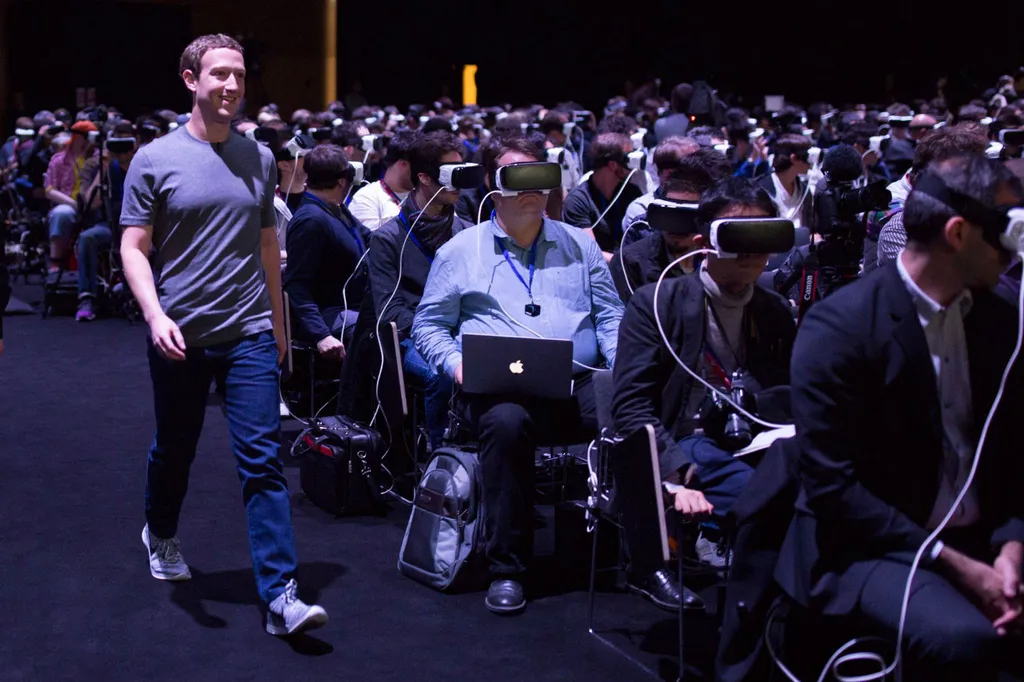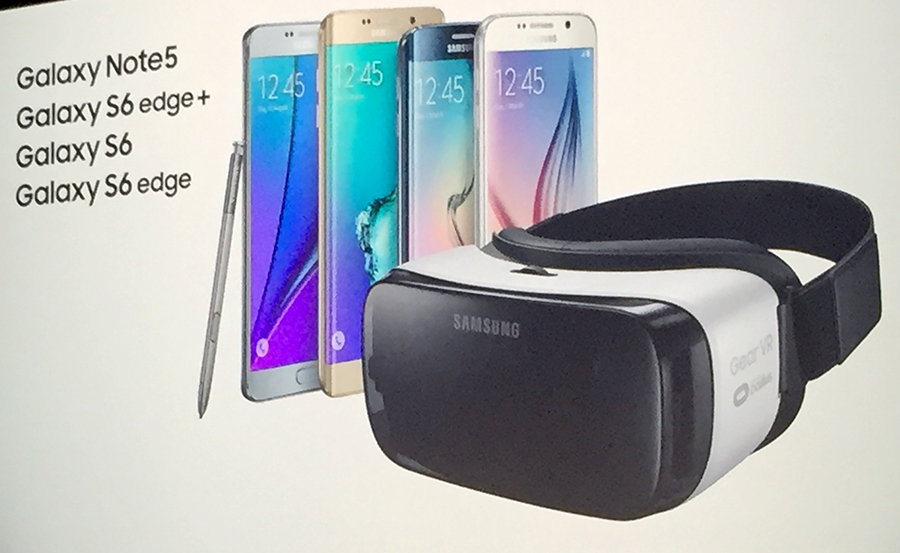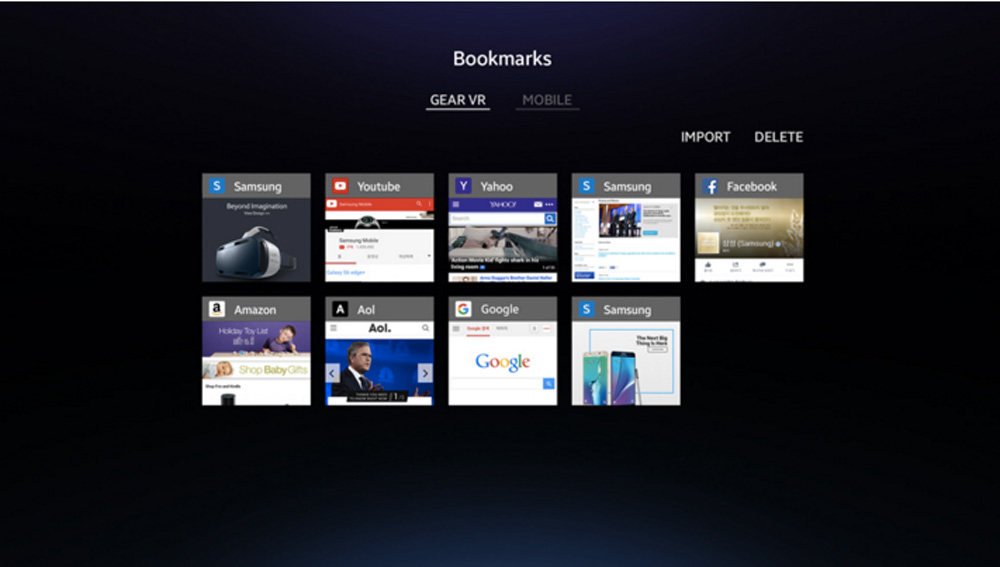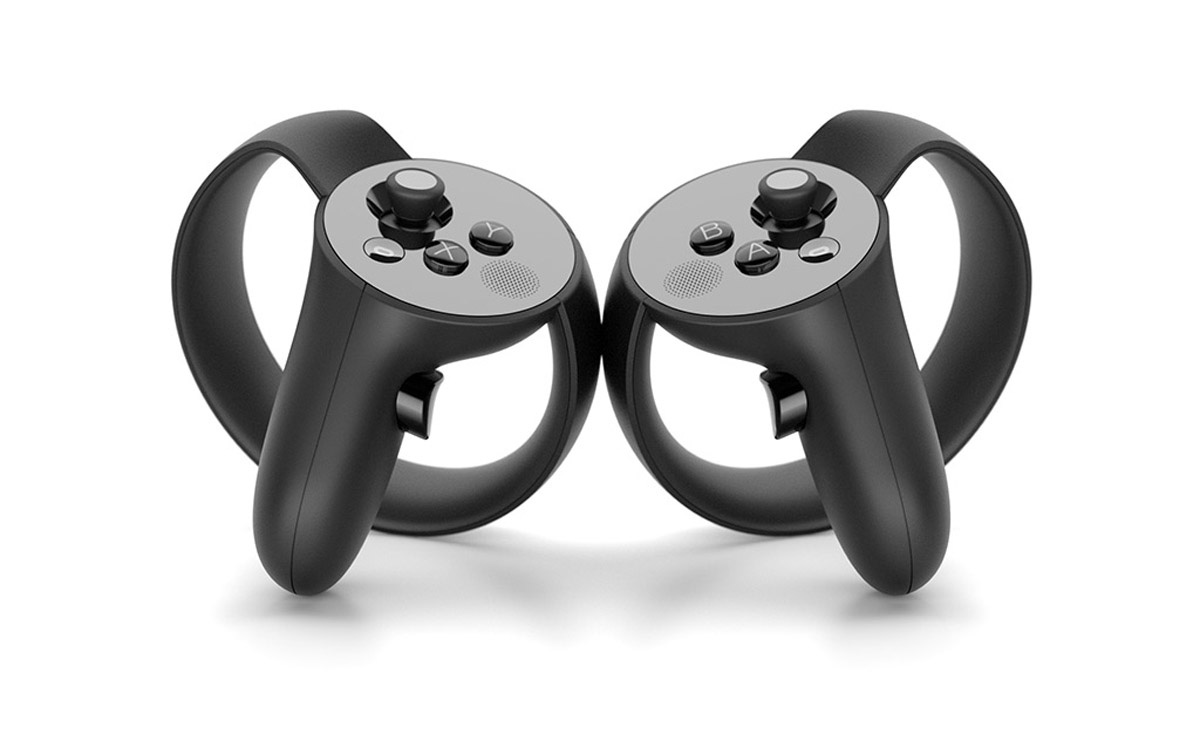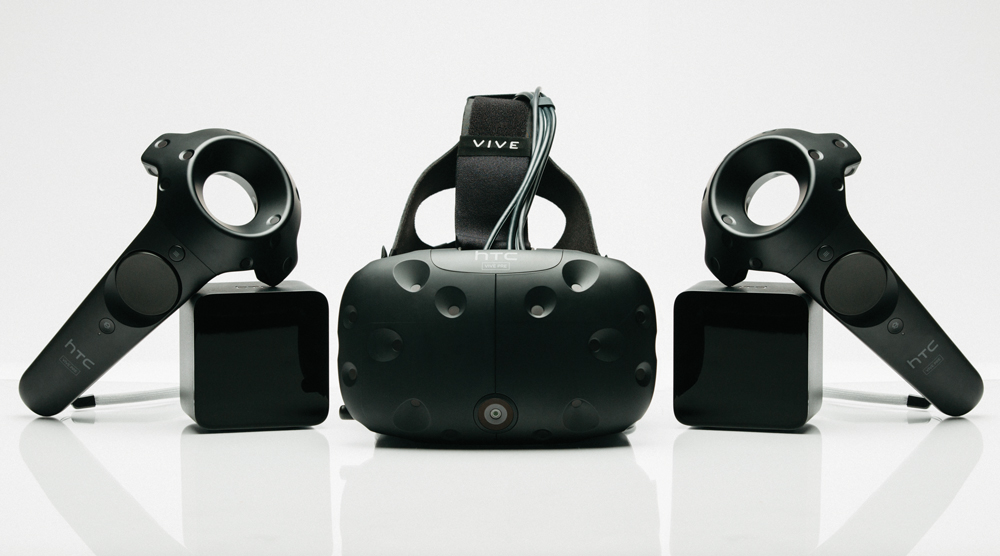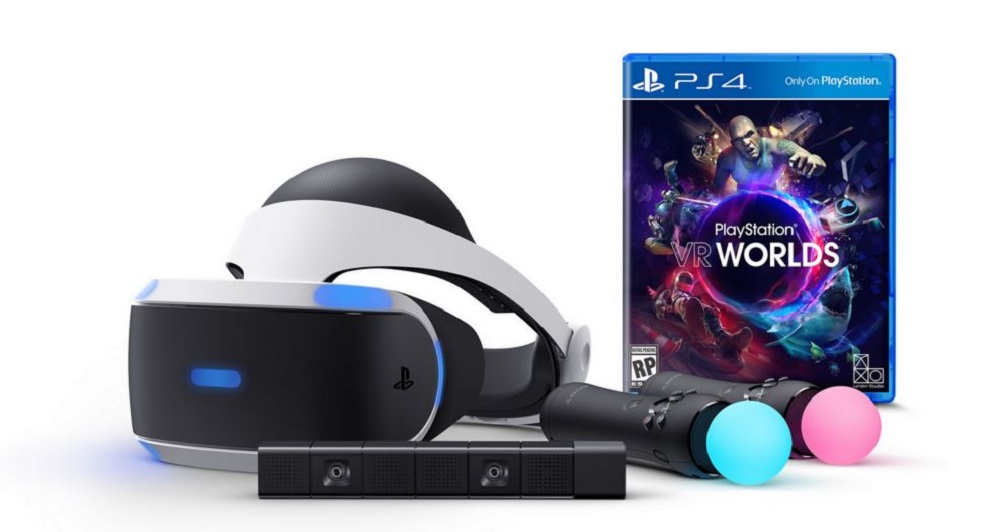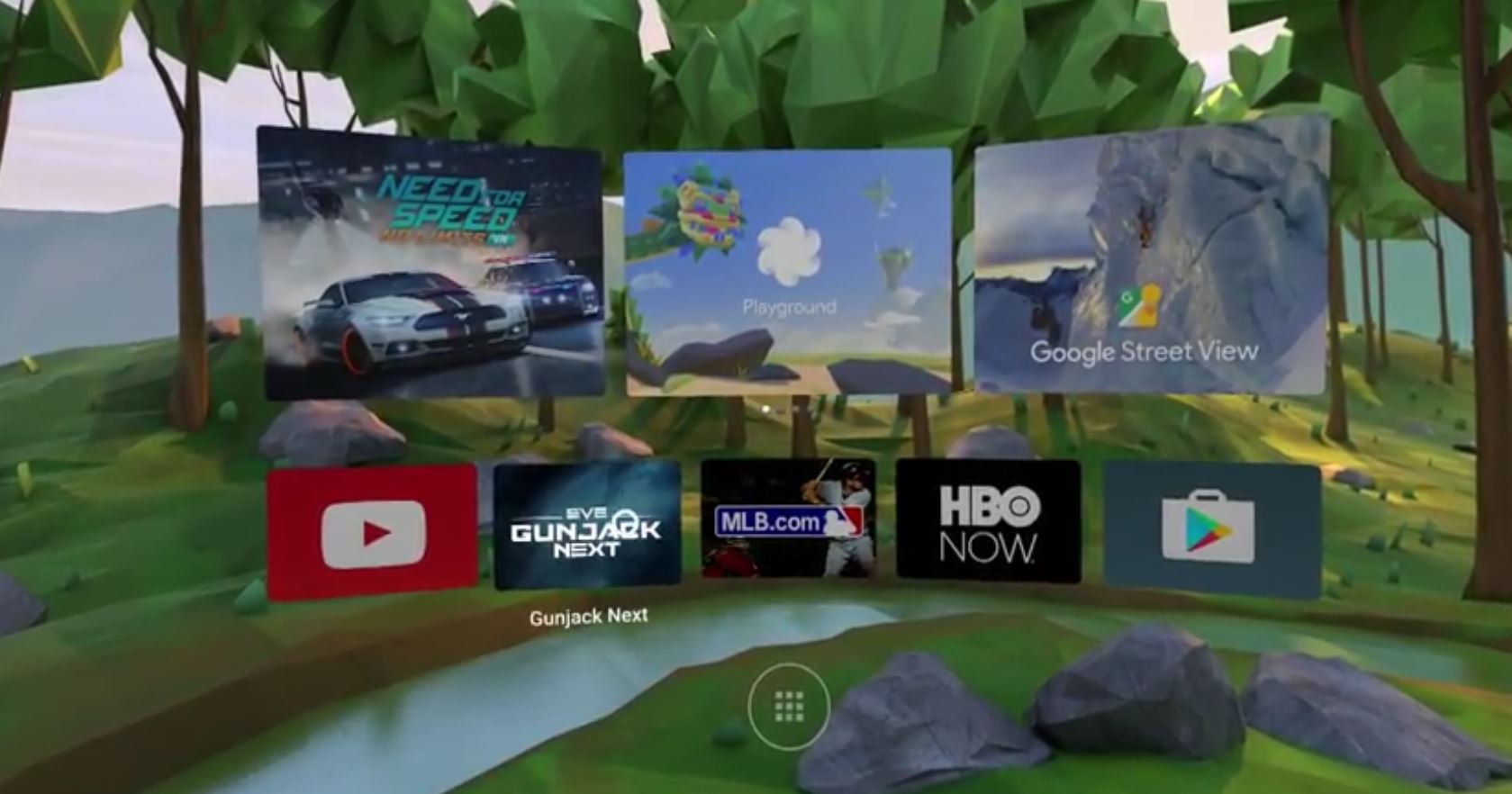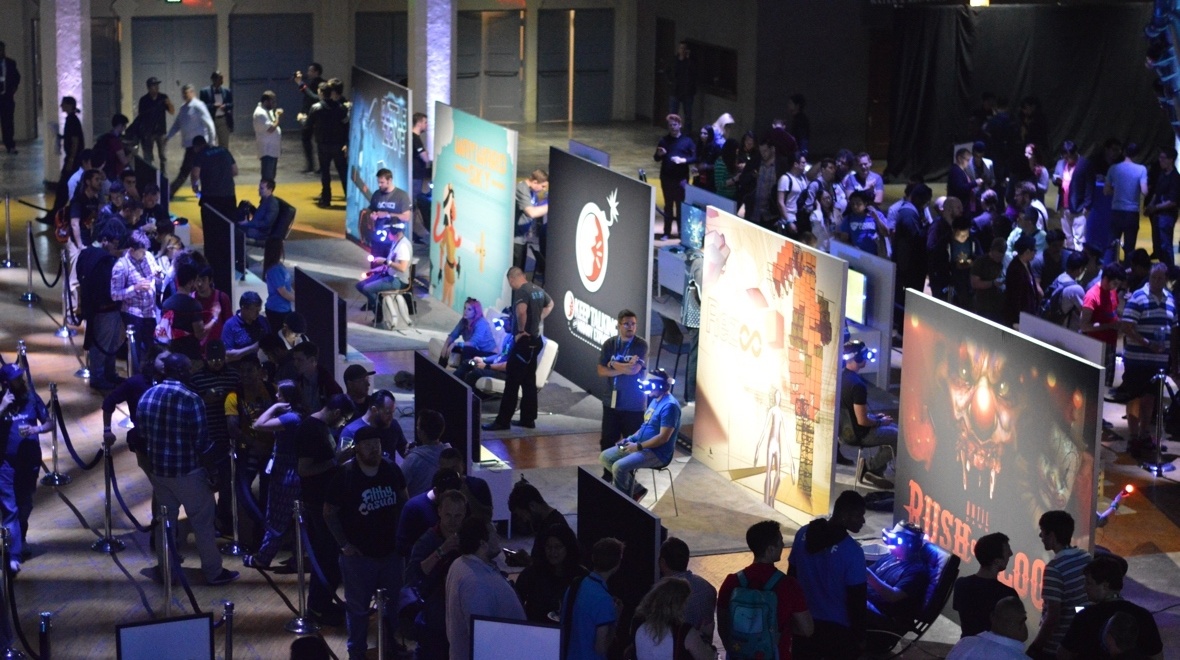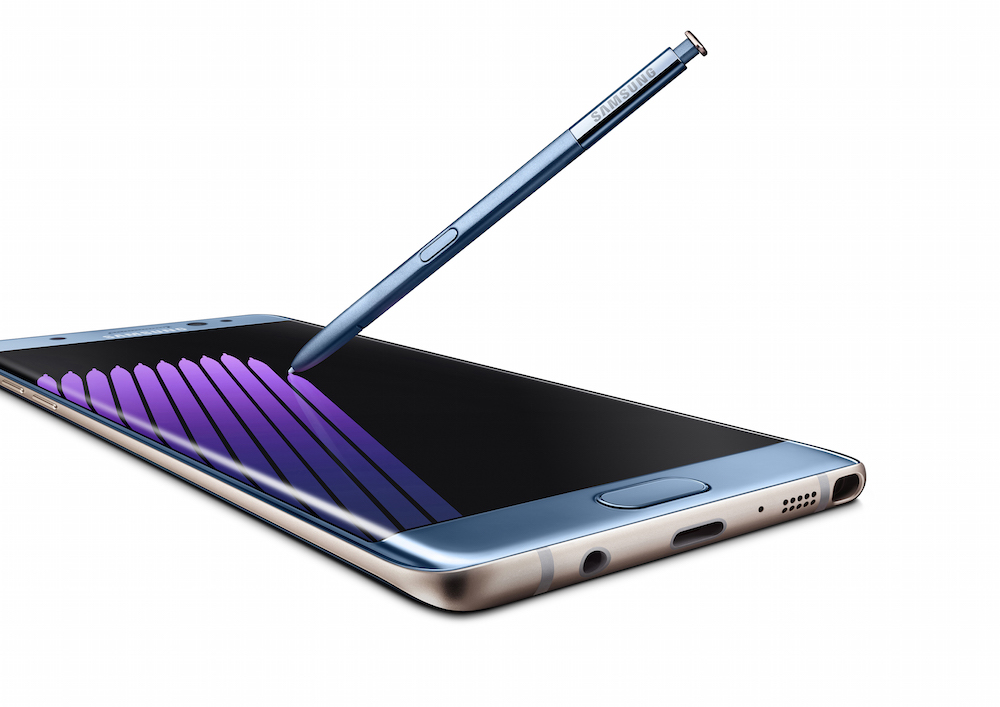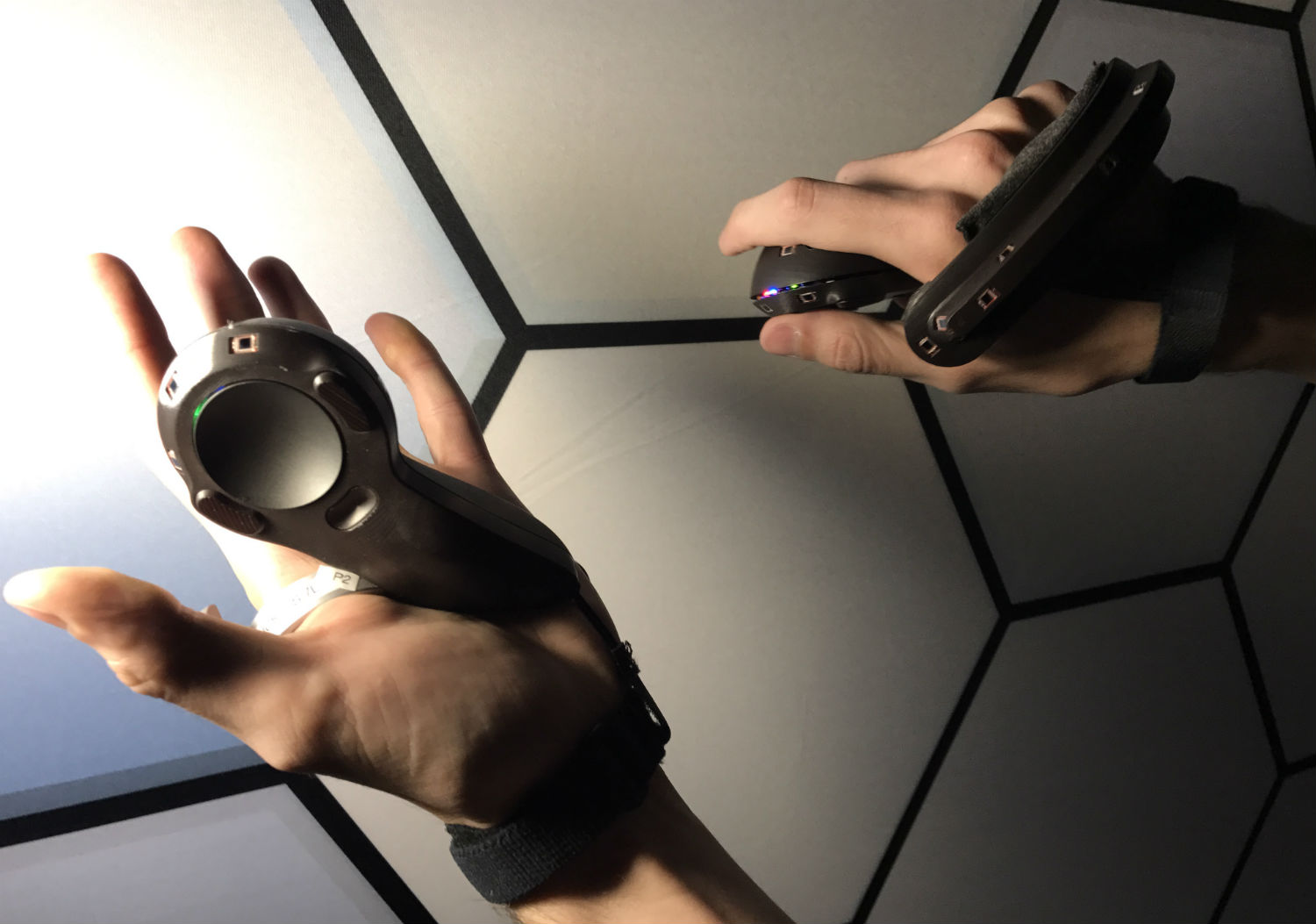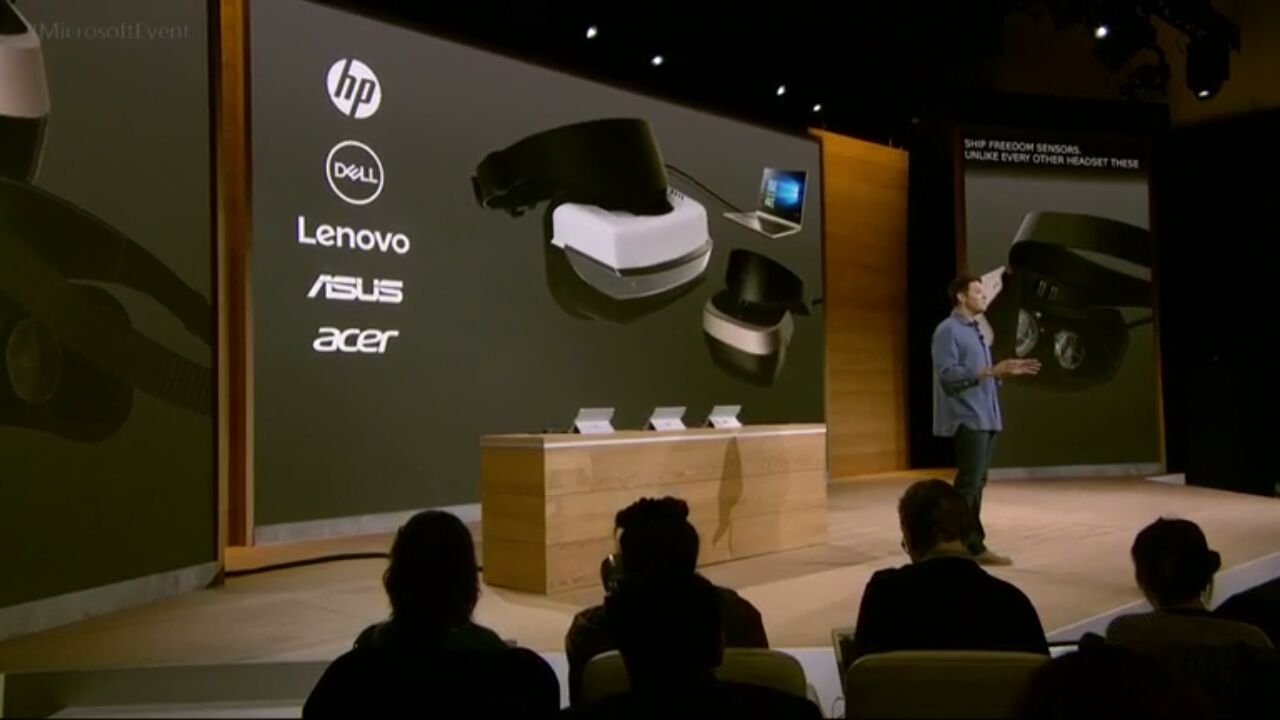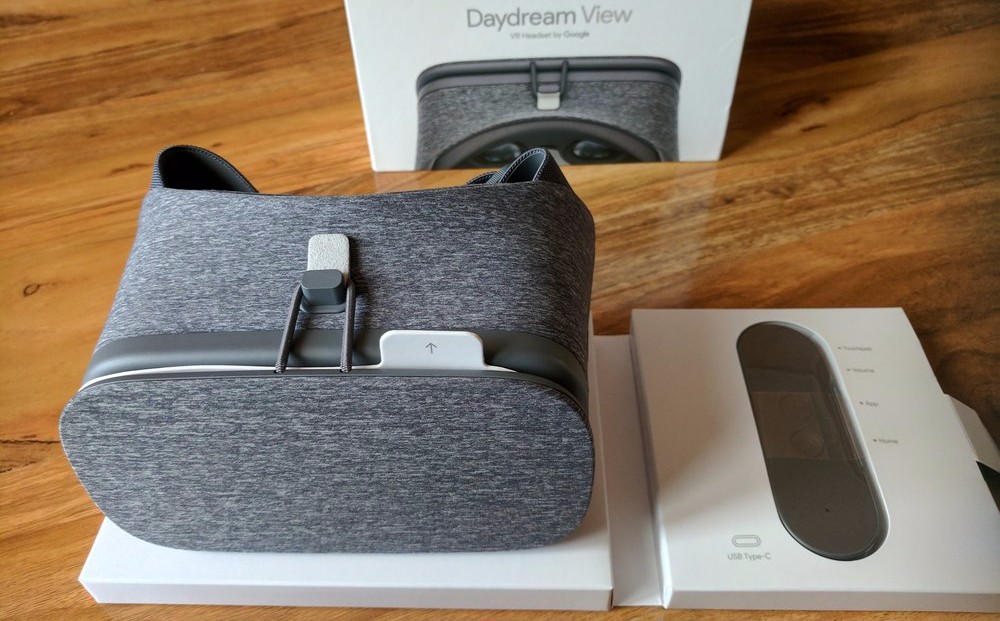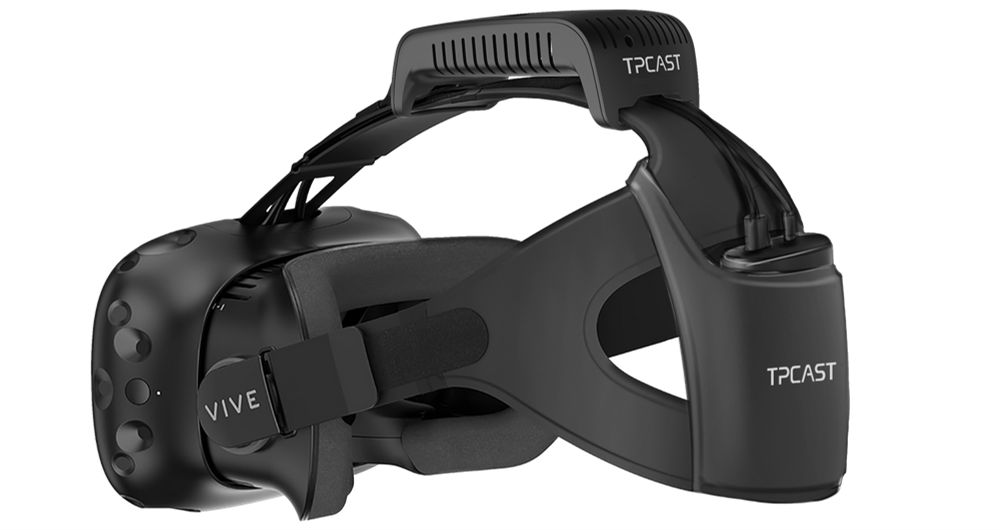In November 2015, uploadvr.com marked its first birthday at the dawn of the consumer VR age. That was just before the launch of the consumer Gear VR, and for Upload, it was still prior to the company’s first significant funding. In fact, it was prior to most of the editorial team joining.
What. A. Year.
This week, Upload is marking the start of its third year and this post is exactly article number 3,000 published for the site. Over the last year, Upload as a whole has grown in a lot of different ways. In April, we opened the doors to the first Upload Collective in San Francisco, a hub for VR and AR startups, development, co-working, education, meetups and even live broadcasting. With over 40 member companies in San Francisco, The Upload Collective has quickly grown both in size and in scope. Additionally, founding the Upload Academy, a VR/AR developer training program, which graduated its first class in August with a number of success stories including Found – a gorgeous Miyazaki-esque narrative experience created by four of our students which was recently recognized on stage during the Oculus Connect Keynote.
uploadvr.com also expanded its editorial coverage throughout the year to deliver the very latest news, reviews, features and editorials covering VR and AR. We captured the transition from a couple companies shipping development tools to hobbyists into a fast-moving industry driven by some of the world’s largest tech companies, each of which is selling increasingly sophisticated systems directly to consumers. The transition for both the VR industry, and for UploadVR internally, has been enormous. As UploadVR starts its third year, consumers are bringing millions of VR systems into their homes.
We’ll have more soon about Upload’s next steps, including our expansion into LA and beyond, but we thought this would be a good opportunity to recap the year that saw VR transition to the consumer market.
November 2015
The New York Times distributes more than 1 million Google Cardboard phone VR viewers to subscribers with the launch of The Displaced, a 360-degree video project focusing on children driven from their homes by war.
The $100 consumer Gear VR also debuts during this same period, arriving alongside a virtual arcade from Oculus to let people play some classic games. Oculus had just launched the very first version of its social features for Gear VR, but a year later, we are still spending most of our time in VR alone.
CCP Games, the maker of EVE: Valkyrie, Gunjack and other upcoming VR games, raises $30 million while NextVR gets $30.5 million from Comcast and others, representing relatively early bets on VR content by investors. Eye-tracking startup Eyefluence, which raises $14 million this month, is acquired about a year later by Google.
December 2015
Samsung starts off the month debuting its VR Internet browser for Gear VR, becoming the first to offer a VR browser. Oculus and HTC had been holding details surrounding Rift and Vive launch windows close to the chest, probably because they had delays to announce and need to nail down new plans. In December, these plans become known.
First, HTC delays the Vive until April 2016, with plans to show an updated developer kit at CES in January. At the end of the month, Oculus officially delays the release of Touch controllers until the last half of 2016. This offers a window to HTC and Valve making the Vive the only room-scale hand-controlled VR platform on the market for most of 2016. Oculus, for its part, makes clear that exclusive games like Rock Band VR and bundling freebies like EVE: Valkyrie with orders is how the Facebook-owned company plans to entice buyers.
January 2016
The enormous Consumer Electronics Show in Las Vegas kicks off the year with major showings for both Oculus and HTC.
Oculus reveals the $600 price for the Rift and opens up pre-orders. The ordering website goes down in the process while shocking some enthusiasts expecting half that cost for the system. When the dust settles, some early adopters find their device won’t arrive until deep into summer, despite the device shipping starting at the end of March.
Meanwhile, HTC shows the Vive Pre-developer kit that would be shipping to developers ahead of the Vive’s arrival in April. Pre-orders for the consumer version are set for the end of February. Valve finishes off the month showcasing many of the games, like Space Pirate Trainer, that will be available via SteamVR in 2016.
Google transitions Clay Bavor into a position as head of VR.
February 2016
Magic Leap kicks off the month with the announcement of an enormous $794 million fundraising round, backed by Alibaba. The money is said to help in manufacturing and launching the secretive augmented reality company’s first product.
A series of announcements from Amazon, Crytek, Epic Games and Unity Technologies showcase an evolution among their respective game engines into VR world creation toolsets. For example, Lumberyard from Amazon is released for creating games and VR experiences, while both Unity and Epic reveal in-VR tools to speed up the development process.
Closing out the month, HTC reveals the $800 price tag of the Vive ahead of pre-orders, while Mark Zuckerberg strolls onto a mobile conference stage in Barcelona and said “millions” would use VR this year. Zuckerberg makes the declaration as Samsung announces the Galaxy S7 and S7 Edge smartphones will ship for a limited time with the Gear VR for free, along with $50 worth of some of the best games available for the platform.
The month closes with Microsoft finally awakening, announcing it will ship the $3,000 self-contained HoloLens augmented reality developer kit to developers at the end of March.
March 2016
A huge month for VR occurs around the Game Developers Conference and newly created Virtual Reality Developers Conference. The event sees so many people packed into the VRDC sessions, on day two they move the VR sessions to larger rooms.
Among a slew of content reveals, Sony reveals PlayStation VR will ship in October starting at $399, with the first pre-orders available at the end of the month.
The month closes with the arrival of the Oculus Rift alongside more than 30 games. Unfortunately, not many people would be able to try Rift on its launch date.
April 2016
The HTC Vive starts shipping to buyers, bringing the first room-scale hand-controlled VR platform to market. It debuts with what is still today one of the best pieces of marketing available to explain VR, embedded above. In fact, developers using Unity and SteamVR start effectively standardizing this mixed reality capture method. HTC also announces a $100 million VR investment fund.
Meanwhile just after the Rift debuts, “an unexpected component shortage…has impacted the original shipping estimates for some early customers.” While the Rift delay is a bummer, Minecraft debuts on the Gear VR, representing one of the highest-profile pieces of content to make it to the VR platform from Oculus.
May 2016
The 2016 VR game gets its final player, with Google revealing its Daydream platform with a plan to partner with Samsung, HTC, Huawei, LG, ZTE, Asus, Alcatel, and Xiaomi to evolve the Android ecosystem and support high-quality VR experiences. Unlike the Gear VR, Daydream features a simple motion controller that can be stored inside the headset itself for travel.
NVIDIA also starts shipping its new generation of VR ready graphics cards led by the GTX 1080. The new generation of cards dramatically lower the cost to get a machine that’s ready to drive VR.
Tension also rises in the VR community as a hack allowing Oculus-purchased games to run on the Vive reveals a dividing line between Valve and Oculus.
June 2016
The E3 gaming conference in Los Angeles is overtaken by VR, with Oculus promising more than 30 games for the Oculus Touch controllers this year and Microsoft making clear it will support VR with its next Xbox console, code-named Scorpio, in 2017.
Valve’s Steam, meanwhile, bakes in support for Oculus Touch, introducing an interesting twist to the platform battle underway. The addition makes it easy for developers to support the Rift and Touch without the difficulty of offering their app through a separate store.
July 2016

The Virtual Reality Venture Capital Alliance (VRVCA) reveals $10 billion in “deployable capital” from investors including HTC, Immersion Ventures, The VR Fund, and the Colopl VR Fund. Oculus finally catches up on pre-orders for the Rift this month. Unity raises a massive $181 million round to grow its ambitions.
The SIGGRAPH computer graphics conference shows new professional VR tools, as well as research into new areas such as haptics and foveated rendering. A new file format for 3D scenes, glTF, is also gaining momentum with the support of industry leaders like Oculus chief technology officer John Carmack.
August 2016
Samsung unveils the Note 7 smartphone alongside the latest Gear VR. Though the new Gear VR is super comfortable to wear, the Note 7 comes with the unfortunate tendency to catch fire. The problem becomes increasingly clear over several weeks.
Valve begins evolving the VR hardware ecosystem by offering its SteamVR tracking technology royalty-free. The move could open up a world of accessories for SteamVR-compatible headsets while also giving partners with different HMD designs access to a precision tracking technology.
Intel introduces “Project Alloy’, which will deliver technology to partner manufacturers in late 2017 allowing them to deliver wireless headsets that can know their precise location in any room. The headsets are likely not going to be available to consumers until 2018.
September 2016
Samsung issues a worldwide recall for the Note 7 to try and stop the Note 7 fire problem. It doesn’t stop the problem.
In a critical data point for the VR industry, the developers of HTC Vive titles The Gallery and Raw Data reveal their apps each cleared $1 million in sales since release, suggesting small teams with the right idea and execution might be able, right now, to make enough money to support themselves from the sale of a VR title.

Amid a bitter U.S. Presidential election season, a bombshell article connects Oculus co-founder, Palmer Luckey, to a crude political meme group. Luckey issues an apology, and Facebook says he’s still with the company, but the originator of the Rift concept has been completely silent publicly in the months since the revelation.
October 2016
A pivotal period in the emergence of the VR industry takes place over the course of the month.
The Note 7 officially dies, with flights in the U.S. banned from even carrying the fire-prone device as cargo. It dies just in time for Google to debut its Gear VR competitor – the eye-popping Pixel phone and Daydream View headset. The device represents the first member of the Daydream family of VR systems, which should grow to become an interchangeable system of headsets and phones.
The Oculus Connect 3 developer conference gives Zuckerberg the chance to personally reveal the most exciting VR initiatives from the company. This includes new social features, with a VR-to-real-world group video calls, as well as an entirely self-contained headset prototype codenamed “Santa Cruz.” The standalone prototype from Oculus seeks to combine the best of the Rift with the mobility of the Gear VR in a self-contained inside-out tracking headset. Oculus Chief Scientist, Michael Abrash, takes the keynote stage to lay out the improvements we can expect to see in high end VR headsets over the next five years. He predicts field of view potentially widening to 140 degrees as pixel density doubles.
Oculus finally announces the $200 price and Dec. 6th release date for the Oculus Touch controllers. The price puts a complete Rift and Touch system essentially on par with the cost of the HTC Vive, and the Rift is potentially more expensive if you opt for three camera sensors to match Vive’s room-scale capabilities.
Oculus also announces a new optimization it calls “asynchronous spacewarp” that will allow VR experiences to run at lower frame rate. The company is using ASW to support a new minimum specification for the Rift, allowing VR to run on a PC as inexpensive as $500.
Not to be outdone with the Oculus announcements, Valve reveals a new controller prototype that can simulate the sensations of grasping and releasing objects.
PlayStation VR also starts arriving at homes, bringing one of the most comfortable headsets into living rooms worldwide.
After such a busy year, Microsoft upends the industry with the revelation of VR headsets starting at $300, powered by Windows with inside-out tracking.
November 2016
Daydream View starts arriving to buyers with its motion controller and impressive Google apps like YouTube, Street View and Photos included. The single strap design is a hit with some early reviews, but it fits uncomfortably for some. Nevertheless, the new simple motion controller is innovative and the Daydream ecosystem should allow different phones to work with different headsets. That means there should be a variety of designs on the way from Google’s partners all compatible with the same apps.
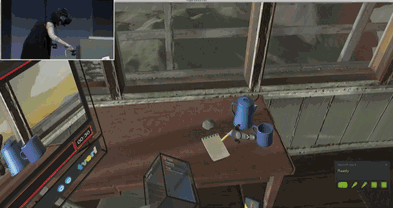
Unity plans to release its Editor VR environment for content creation inside VR next month. Extensions for Editor VR should allow other developers to add their own functionality to the Unity asset store. This would offer an additional revenue stream for developers creating VR software tools rather than games while also being a first step in allowing developers to do more of their work while inside VR.
Most recently, the unexpected announcement of an HTC-backed startup reveals a $220 accessory for the HTC Vive that can turn the headset wireless when it ships in 2017. It is said to add less than 2 milliseconds of latency to the overall system.
Like many of the announcements in 2016, including Microsoft’s VR headsets, Unity’s Editor VR and even Oculus Touch, we are anxious to get our hands on these systems for extended periods of time so we can get a better idea of just how 2017 is going to shape up. In the meantime, we can recognize 2016 as the year when giants Google, Microsoft and Intel joined Sony, Facebook, HTC and Valve in declaring VR and AR as critical to the future of their platforms.
In 2017, we should start to see the emergence of an early market leader as prices come down, capabilities improve and more content is made available for these systems. Of course, one of the biggest unknowns for 2017 remains the same unknown we had in 2016: What exactly is Apple doing?

